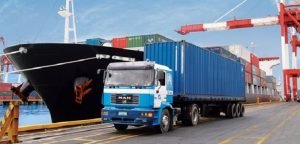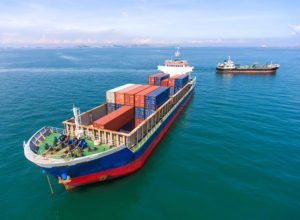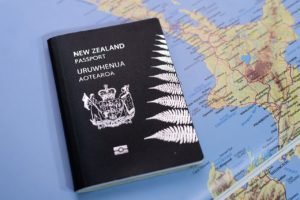A Complete Guide To Shipping Cars From The UK To New Zealand
Getting Started
When importing your car from the UK to New Zealand, it is important to do the following:
- Get in touch with an Entry Certifier: An Entry Certifier will help you ascertain if your vehicle can be imported or not. While it is not mandatory to seek the services of one at the beginning, an entry certifier can help clarify most if not all issues you may face during the vehicle importing process in New Zealand. We have provided a list of trusted Entry Certifiers in this article to help make it easier to get in touch with one.
- Know Vehicle Age Restrictions In New Zealand: A car only qualifies for importation when it is not older than 8 years. However, a vehicle older than 8 years can be imported if it is classified as a collector’s item or a special interest vehicle.
- Know New Zealand’s stand on Left-Hand Drive and Right Hand Drive Vehicles: Left Hand Drive Vehicles are not restricted for import in New Zealand, however, they are not allowed to be driven on New Zealand roads. Most Left-Hand Drive Vehicles must be converted to Right-Hand Drive before they can be driven on New Zealand roads.
Check To See If Your Vehicle Meets The Required Standards
The New Zealand Transport Agency recognizes different categories of cars and they can be summarized as:
Light vehicles: These are vehicles whose Gross Vehicle Mass is under 3500 Kgs and include Cars, Motorcycles, mopeds, vans, people-movers, trailers including horse floats and caravans, and small buses.
-

Light Vehicles
Heavy vehicles: are vehicles whose gross Vehicle Mass is over 3500 Kgs and include heavy buses, trucks and trailers. They must have a chassis rating before being registered. It is important to know that these vehicles have added challenges with their braking effectively and within safe and stopping distances and it is important that they meet a heavy brake standard and be fitted with ABS (Anti-Lock Braking System), ESV (Electronic Stability Control) or LSV (Low-Speed Vehicle). This includes heavy buses, heavy trucks and heavy trailers

Heavy Vehicles
The standards imposed on cars being shipped to New Zealand depend on which category they fall under. They can be found here.
An Entry Certifier can help with this process.
Choosing The Right Shipping Method
When shipping a car from the UK to New Zealand, Simba Shipping currently offers a wide variety of vehicle shipping methods among them are:
Roll On Roll Off (or as it is more popularly called RoRo): Picture an underground parking building except it floats. The main advantage of RoRo shipping is that it is the relatively cheaper of the three options.

RoRo Shipping
Container Shipping: With container shipping, you get to choose to get a dedicated container for shipping your car or a shared container where your car is shipped with another car in the same container. While this method is slightly more expensive than RoRo, it is still significantly cheaper than Air Freight.

Container Shipping
Air Freight: This is the most efficient of all shipping methods but is slightly expensive.

Air-Freight
Still not sure which method to go with? Why not send us an email at sales@simbashipping or call us at +44 1923 380380 and we can better advise you on which method to go with.
Additionally, we offer Pre-shipment Inspection, UK-Wide Vehicle Collection and Marine insurance.

These are the ports we offer in New Zealand :
- Auckland
- Lyttelton
- Wellington
Contact us today to get a quote to any of these ports.
Entry Certification And Entry Certifiers
Before using your vehicle on New Zealand roads an Entry Certifier needs to inspect it to make sure it complies with New Zealand Frontal Impact and Emission Standards.
At the Entry Certifier, your vehicle will:
- Be issued with a valid vehicle identification number (VIN), if it doesn’t already have one
- Be checked to see that it falls within one of the exempted categories (and that you have all the necessary documentation)
- Be checked for compliance with New Zealand safety standards
- Be registered and licensed
- Be issued with a warrant of fitness or certificate of fitness
- Where appropriate, be issued with a road user charges license.

vector created by macrovector / Freepik
Your Entry Certifier may charge a small fee to get the process done so you must consult with him/her on this before you get started.
The following certificates are issued where the vehicle meets requirements:
- A registration application form (form MR2A), which verifies that it has passed these checks and is safe for you to drive, and
- A warrant of fitness or certificate of fitness, depending on the vehicle’s size
Below is a list of available Entry Certifiers as stated by the New Zealand Transport Agency. They are selected branches of:
Automobile Association (AA) || Phone: 0800 500 333 || Email: aatech@aa.co.nz || Website: www.aa.co.nz
Vehicle Inspection New Zealand (VINZ) || Phone: 0800 468 469 || Email: info@vinz.co.nz || Website: www.vinz.co.nz
Vehicle Testing New Zealand (VTNZ) || Phone: 0800 88 88 69 || Email: technical@vtnz.co.nz || Website: www.vtnz.co.nz
Drivesure Vehicle Testing Ltd || Phone: 0800 220 240 || Email: admin@drivesure.net.nz || Website: www.drivesure.net.nz
Nelson Vehicle Testing Centre Ltd || Phone: 03 539 1223 || Email: office@nvtc.co.nz

Designed by Freepik
Quarantine Inspection And Cleaning Inspection
Once your car lands at the port it will need to go through inspection by the Ministry of Primary Industries. A Ministry or Primary Industries inspector usually carries this out and he/she checks the vehicle for any contaminants such as soil, plant or animal material. Should they find any of these the vehicle will have to be cleaned and the importer will be responsible for any of the inspection or cleaning (should it be required) charges.
They may require the following documents:
- Consignor name and contact details
- Port of loading.
- Country of origin (the country where a used item has been used in during the last 12 months).
- Date and country of manufacture for new vehicles and machinery only.
- Shipment details: vessel, voyage number, container number (if relevant) and date of loading.
- The number and type of each vehicle or item of machinery or parts.
- Whether the vehicles, machinery and parts are new or used.
- Make and model of each vehicle or machine (applies to whole vehicles/machinery only).
- Unique identity information, such as a vehicle identification number (this generally applies to entire/whole vehicles/machinery only).
Clearance

From Astize / Pixabay
After your vehicle has landed in New Zealand and passed inspection by the Ministry for Primary Imports (or MPI), then the following documents are required during the clearing process:
- Your passport, if you travelled overseas to purchase the vehicle
- Invoice receipt showing total paid and date of purchase
- Registration papers or certificate of permanent export if you are importing from the UK
- Invoice showing freight costs and insurance to New Zealand
- Bill of Lading
- Odometer reading time of sale for export to New Zealand
- Odometer reading at time of importation into New Zealand
After Customs clearance has been given, the vehicle should be presented to a transport services delivery (TSD) agent for inspection and a compliance audit. When this has been done, vehicles including motorcycles should be registered with the TSD agent.
Customs Duty, Taxes And How They Work In New Zealand

Accountant calculating income and examining report from Freepik.com
Customs Duty and taxes in New Zealand are extensive but fairly simple to understand. In Summary:
- Motor vehicles and motorcycles are free from tariff duty and only subject to a goods and services tax of 15 per cent.
- Ambulances and motorhomes (vehicles for the transport of persons specially equipped for habitation, ie, with sleeping, cooking, and toilet facilities), which are subject to duty at the rate of 10 per cent in addition to the Goods and Service Tax.
- Returning residents are also exempt from customs duty and GST provided they can prove ownership of their vehicle
- When calculating taxes and custom duty depreciation is taken into account and can be found here.
You can get in touch with Simba Shipping for an estimated charge of customs before shipping your car to know how much it will cost to ship your car to New Zealand from the UK.
Below are two examples of how customs duty and taxes are calculated in New Zealand:
An example of a vehicle purchased over the internet (Where depreciation is not applicable):
| (a) Value for duty of vehicle— (pounds sterling) | £8,500.00 |
| (b) Value for duty of vehicle (NZ$) – converted using Customs exchange rate eg at 0.31 | NZ$27,419.00 |
| (c) Value for duty after 0% depreciation allowed | NZ$27,419.00 |
| (d) Duty = (c) at a rate of duty of 0% | NZ$0.00 |
| (e) Freight, insurance and shipping costs | NZ$4,500 |
| (f) GST value = (c) + (d) + (e) | NZ$31,919.00 |
| (g) Goods and Services Tax (GST) = 15% of the total of (c) + (d) + (e) | NZ$4,787.85 |
| Amount Payable | |
| Customs charges payable = (d) + (g) | NZ$4,787.85 |
| Import entry transaction fee | NZ$49.24 |
| Total Payable | NZ$4837.09 |
Example of how your taxes are calculated for a vehicle owned by the importer for 6 months but less than 9 months (Where depreciation is applicable):
The depreciation period is measured from the time of delivery (the date possession is taken following purchase) until the date on which the ship or aircraft carrying the vehicle arrives in New Zealand territorial waters. Depreciation is also not given if a vehicle is ordered from New Zealand, for example, over the internet, and the owner does not take delivery in person overseas and use the vehicle prior to handing it over for shipping to New Zealand.
| (a) Value for duty of vehicle— (pounds sterling) | £8,500.00 |
| (b) Value for duty of vehicle (NZ$) – converted using Customs exchange rate eg at 0.31 | NZ$ 27,419.00 |
| (c) Value for duty after 27.5% depreciation allowed | NZ$ 19,479.00 |
| (d) Duty = (c) at a rate of duty of 0% | NZ$0.00 |
| (e) Freight, insurance and shipping costs | NZ$4,500 |
| (f) GST value = (c) + (d) + (e) | NZ$24,379.00 |
| (g) Goods and Services Tax (GST) = 15% of the total of (c) + (d) + (e) | NZ$3,656.85 |
| Amount Payable | |
| Customs charges payable = (d) + (g) | NZ$3,656.85 |
| Import entry transaction fee | NZ$49.24 |
| Total Payable | NZ$3,706.09 |
This is just a few examples but you can find more here on the different vehicle categories. Or you can simply use the Duty calculator.
Exemptions To Returning Residents And Immigrants
For those importing vehicles from countries that use Left-hand drive cars, it is good to note that Left-hand cars are not allowed in New Zealand unless they have a collector’s value or will not be operated on New Zealand roads. To drive them on New Zealand roads you have to convert the car to a Right-Hand Drive first.
Returning residents can ship their cars without paying for customs duty if they can prove their previous residence in New Zealand and have lived outside New Zealand for the last 21 months. They will also have to provide proof of ownership for at least one year before they departed for New Zealand.
It is also important to note that the car has to meet New Zealand frontal impact and emissions standards.
To have a vehicle identified as belonging to an immigrant or returning New Zealander, the person must:
- Be a New Zealand citizen, a New Zealand resident or a person entitled under the Immigration Act 1987 to take up permanent residence
- Have lived outside New Zealand for not less than 21 months before the date of his or her arrival in, or return to New Zealand
- Apply within 18 months of the applicant’s arrival in or return to New Zealand and have personally owned the vehicle
- Have personally owned and registered the vehicle for personal use in a country outside New Zealand for at least one year before the applicant’s arrival in, or return to New Zealand
- Not have had any other vehicle identified as an immigrant’s vehicle
- Not have imported, or be imported, the vehicle on behalf of, or for, a third party.
Temporary Import Vehicles In New Zealand
Temporary import vehicles refer to vehicles brought in to New Zealand temporarily by a resident of another country for a maximum of 12 months while remaining registered in its country of origin. Your vehicle is exempt from customs duty and taxes if it qualifies as a temporary import vehicle.
To qualify for a Temporary Import permit in New Zealand you will need:
- A Carnet de Passages en douanes or carnet. These are issued by AIT.FIA- affiliated member clubs such as the Automobile Association. If you don’t have a valid carnet you will need to apply for a temporary import entry at the New Zealand Customs Service. This will require a refundable cash deposit of equal value to Customs’ charges you would have to pay if the vehicle was being imported on a permanent basis.
- Payment of the ACC levy. The New Zealand Transport Agency needs to be notified of the details of the vehicle and the owner on the Motor Vehicle Register.
Note: This article means only to serve as a guide and should be used as such. It is important that you verify the facts based on your vehicle.
Sources
- Vehicle Standards – https://www.nzta.govt.nz/vehicles/vehicle-types/vehicle-classes-and-standards/standards-that-apply-to-your-vehicle/
- Concessions – https://www.customs.govt.nz/globalassets/documents/tariff-documents/the-working-tariff-document-part-ii-concessions.pdf
- Exceptions for immigrants and returning residents – https://www.nzta.govt.nz/vehicles/importing-a-vehicle/exceptions/importing-a-left-hand-drive-vehicle/
- Vehicle Clearance: https://www.customs.govt.nz/globalassets/documents/fact-sheets/fact-sheet-29-advice-on-private-motor-vehicle-imports.pdf
- New Zealand Factsheet 44: https://www.nzta.govt.nz/resources/factsheets/44/
- Importing Left-Hand Drive Vehicles: https://www.nzta.govt.nz/vehicles/importing-a-vehicle/exceptions/importing-a-left-hand-drive-vehicle/
- New Zealand Frontal Impact Standards: https://www.nzta.govt.nz/resources/frontal-impact-compliance/frontal-impact-compliance.html
- New Zealand Factsheet 35:https://www.nzta.govt.nz/assets/resources/factsheets/35/docs/35-importing-veh-temporarily.pdf


